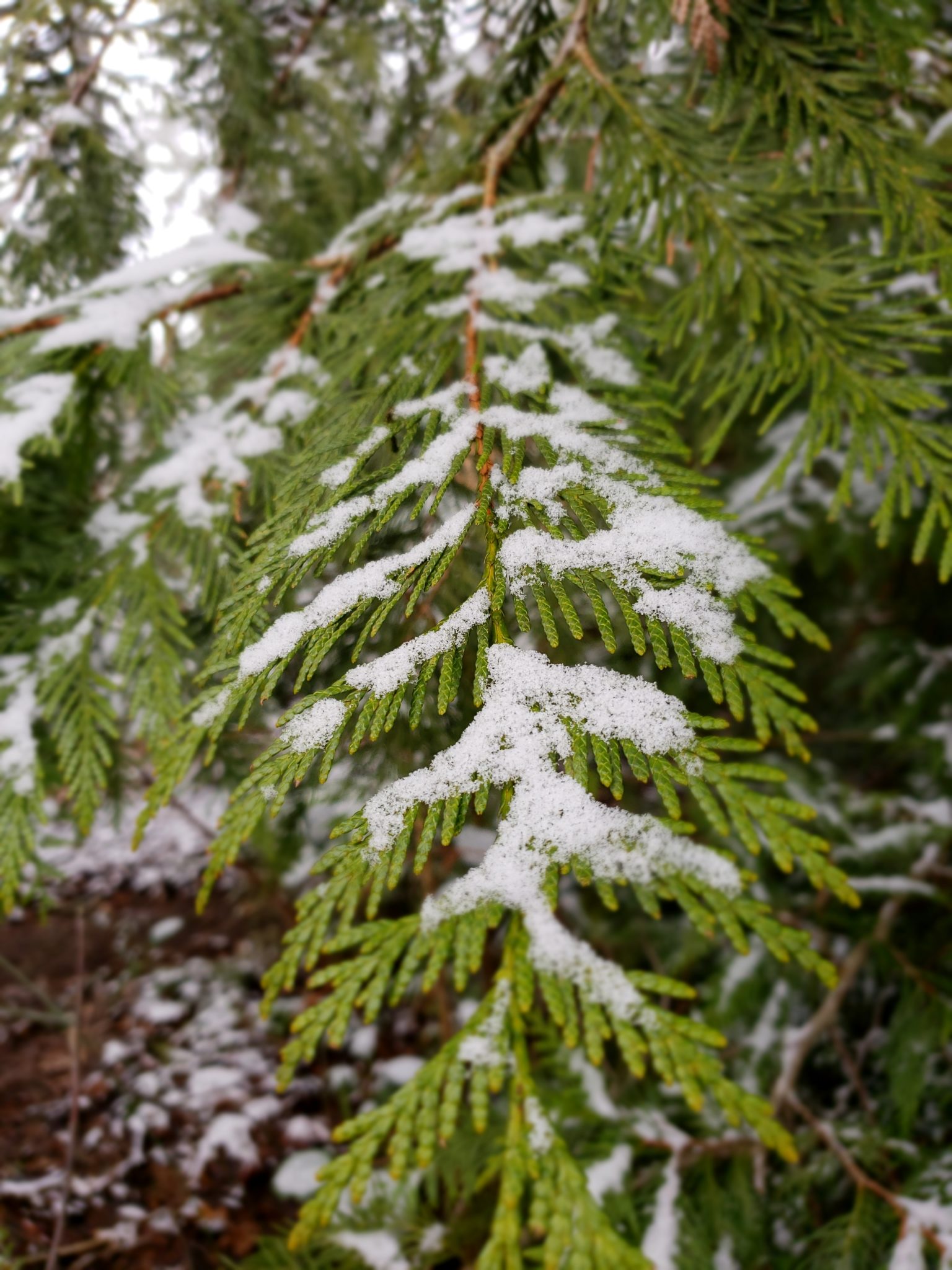
Tree Highlight: Western Redcedar
The western redcedar, or western red cedar, (Thuja plicata) is one of our favorite trees. Its swooping branches support flat sprays of scale-like needles, making it an easily identifiable conifer in the Willamette Valley. The western redcedar is native to the Pacific northwest and plays an important role in our local ecosystem and history. The western redcedar is not a true cedar, but a member of the Cupressaceae family, which includes cypresses.
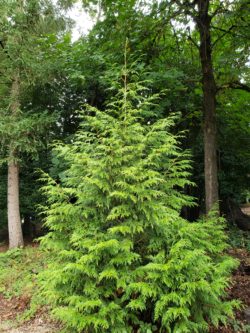
Western Redcedar Growth Habit
Western redcedars grown in ample light boast foliage all the way to the ground. The branches may originate far up the main trunk, grow all the way down to the ground, and grow upward again to give the elegant effect of swooping branch growth in a “J” shape. These magnificent trees can grow to impressive heights over 200 feet tall with a buttressed base and can live over 1400 years.
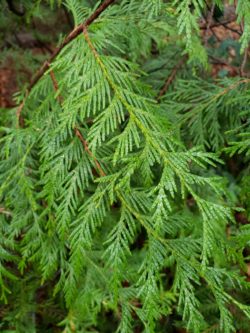
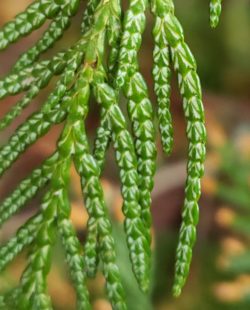
The flat sprays of scale-like needles are green above and lighter green on the underside. The lighter color on the underside of the needles is from the white stomatal bands, sometimes described as looking like ‘white butterflies’, which distinguishes them from other trees in the cypress family. When crushed, the foliage emits a distinctive pleasant scent.
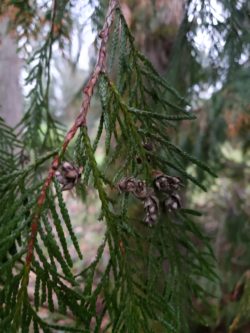
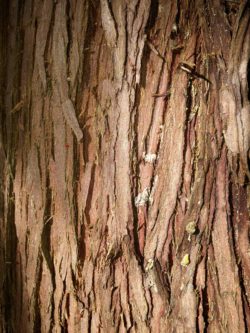
The western redcedar is a conifer, which means that it bears cones. Its tiny cones are up to 1/2 inch long with several overlapping scales that resemble tiny roses. The bark of the western redcedar is fibrous with stringy brown strips.
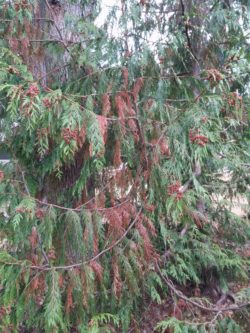
Western redcedar trees are evergreen, so they do not lose all of their needles at once. The oldest needles, seen growing closest to the main trunk, do not photosynthesize as well as new growth. The tree sheds these less productive needles in the fall. The seasonality of this foliage loss is very noticeable, as seen above. This phenomenon is called flagging and is a normal part of the life cycle of the plant. The winds of winter will eventually blow the dead needles out of the canopy.
Western Redcedar in Ecosystem and History
As a native tree, western redcedars are uniquely adapted to our wet winters, dry summers, and mild temperatures. They prefer the cool shade of moist habitats. Along with Douglas-fir and western hemlock, western redcedars grow in mixed conifer forests. Because they are shade tolerant, they can reproduce in the low light of the forest. They also grow in riparian habitats along streams and rivers.
They are important pillars of Pacific northwest ecosystems from British Columbia south to northern California. Western redcedar foliage feeds elk and deer in the winter months. Birds and small mammals eat the seeds and many birds seek out western redcedar cavities for nesting sites.
Western redcedars supported and were venerated by the early human inhabitants of the Pacific northwest. The wood of the western redcedar is rot resistant and straight grained, and was used for building canoes, houses, and storage boxes. The fibrous bark was used to make clothing and baskets and the foliage was used for medicinal remedies. The western redcedar was so important to these cultures that some Pacific northwest tribes called themselves “People of the Cedar.”
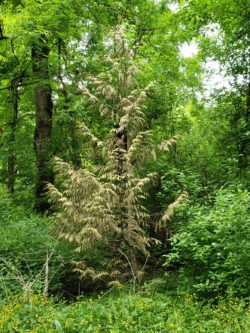
Western Redcedar Stress
Unfortunately, western redcedars seem to be in trouble. Western redcedars are showing signs of stress in pockets throughout the Willamette Valley. Yellowing needles (seen above), dying tops, and thinning canopy are all signs that these beautiful trees are in decline. A study is being conducted by the Oregon Department of Forestry to determine the cause and progression of the decline with climate change as a suspected cause.
Western Redcedar Planting and Care
Because western redcedars are shade and moisture-loving trees, an ideal planting site would provide protection from the afternoon sun in an area that does not dry out completely in the summer. Western redcedars are also shallow rooted and should be planted in areas without many other plant roots competing for water. Their large mature size means that they need to be planted at least 20 feet from the nearest plant or structure.
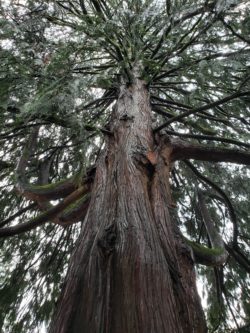
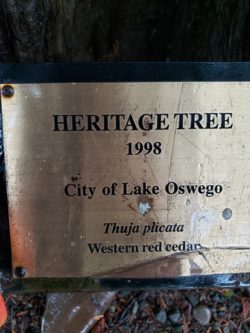
Noteworthy Specimens
There are many noteworthy specimens of western redcedar to be admired around the greater Portland area. The massive western redcedar seen above grows in downtown Lake Oswego and is designated as a heritage tree of Lake Oswego. The Hoyt Arboretum in southwest Portland boasts many stunning specimens of western redcedar. To admire these beautiful trees up close, you can find their specific locations among the arboretum’s extensive plant collection in the Hoyt Arboretum plant database.


